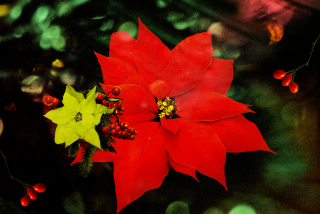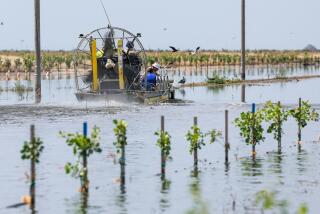Americans Remain Nutty Over Favorite Pistachios
Americans have always been fascinated with nuts. Almonds, pecans and walnuts, macadamia nuts, pine nuts, pistachios, hazelnuts, filberts and peanuts.
One by one they seem to reach a peak in popularity, then become a staple item while a different one takes the spotlight. Many once relegated to cakes, candies and tortes are now showing up in new sauces for poultry, game and fish.
Pine nuts and pistachios are two of the latest to be seen in many new recipes. Neither is new. But the pistachio nut is probably tops as the current favorite, especially the large variety in the natural color shells that are grown in California.
Once the product of Assyria and Iran, they’re now grown in the United States. Pistachios are green or ivory, but some Near Eastern varieties are dyed red in processing to hide blemishes from crude hulling methods.
U.S. importers use a nontoxic, red vegetable dye approved by the Food and Drug Administration.
Some imported pistachios are also coated with a thin layer of cornstarch and salt to improve appearance.
Because California nuts are mechanically hulled and dried within 24 hours of harvesting, they don’t need the red coloring.
The pistachio has a characteristically sweet, oily taste that is excellent as a flavoring for sweets, sauces, cakes and ice cream.
Although pistachio oil is used as a flavoring ingredient, the majority of nuts in the United States are sold in the shell and eaten out of hand as a snack.
California growers claim their pistachios taste the same as the imported nuts but are larger, fresher and easier to open, although the question of best flavor is always debatable among purists and people from Iran.
Under favorable conditions, pistachio trees live and produce for centuries, producing a heavy crop one year followed by a smaller one the next. In the Kerman region of Iran, a 700-year-old tree is still standing. The most important California cultivar is called “Kerman.”
The Queen of Sheba was especially fond of pistachio nuts and is said to have monopolized the limited pistachio output of Assyria. In Syria, pistachio nuts are an important ingredient at wedding feasts, and following a social call departing guests often receive a small bag of pistachios as a gesture of goodwill.
Iran was the top supplier of pistachios to the U.S. market in 1979, with 12 million pounds. After the seizure of the American hostages and the subsequent cutoff of all Iranian imports, Iranian pistachio imports in 1980 fell to less than 1 million pounds.
Pistachios vary in size. The Iranian variety has from 18 to 40 nuts per ounce. California nuts are larger, sometimes as few as 14 per ounce.
Today, about 30 million pounds of in-shell pistachio nuts are consumed annually in the United States. It is expected to grow to at least 50 million pounds a year in the next decade.
Pistachios are fine in sauces, pates and stuffings, and Germans and Italians use the oil in curing pork sausage.
When shopping for nuts, look for freshness. Store both shelled and unshelled nuts in the refrigerator. For longer storage, seal carefully and freeze. The nuts will keep well in the freezer for a year or longer and can be used directly from the package.


